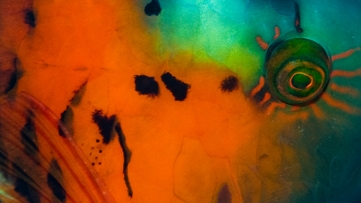
| Home |
| Colors of the Reef |
| Search the Reef |
| Science and the Reef |
| Equipment |
| New |
| Links |
| Contact |
| Interna |
Octopus's Amazing Change of Color
Octopuses like this Caribbean Reef Octopus (Octopus briareus) are amazing animals in many respects. They are able to change color and shape within seconds and thus perfectly blend with their environment and are therefore difficult to detect. These particular species are nocturnal and can only observed during night dives. When undisturbed it shows a blue-gree color that can be changed to red and brown and many different patterns within seconds. Note that the second picture below was taken only five seconds after the first one. These color patterns are controlled by chromatophore organs consisting of a single chromatophore cell and several muscle and nerve cells attached. Contraction of the muscle cells results in an expansion of the chromatophore cell and a 50 times increase of its area (for reference see the Tree of Life web project). In the intracellular sac the pigment granules are found that are the carriers of the color patterns. Since nerve cells are directly attached to the chromatophore cells the color change is very rapid.
The inner layer of octopus (and other cephalopods) skin uses light scattering leucophore cells and a reflective layer of iridophore cells to reflect the ambient light. Thus, the skin of cephalopods is of amazing complexity and even has researches inspired to develop new optical materials (for reference see Chemical and Engineering News and the Marine Biological Laboratory).
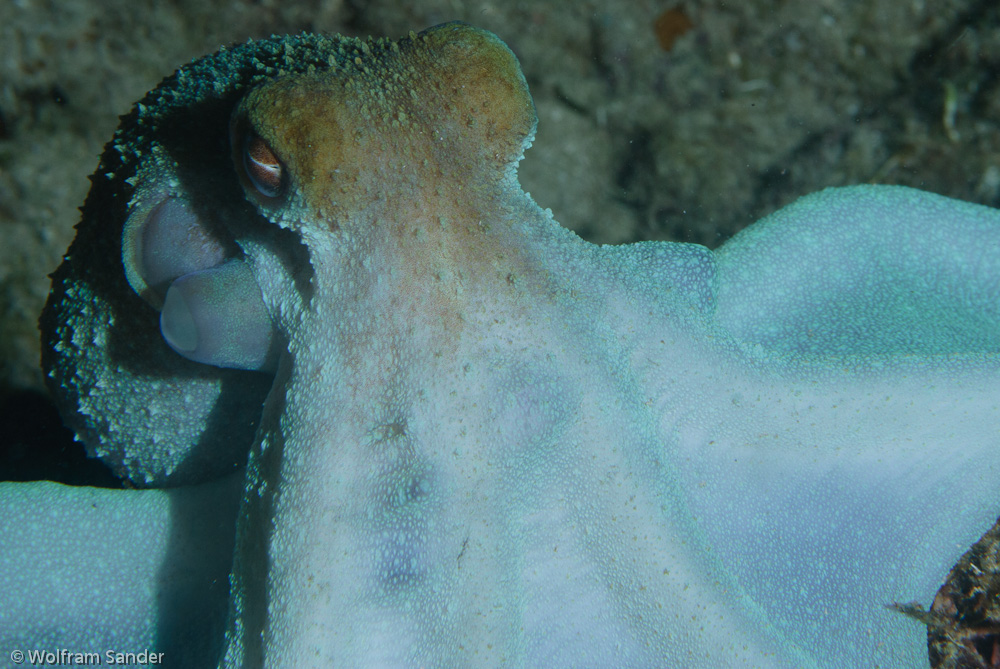 |
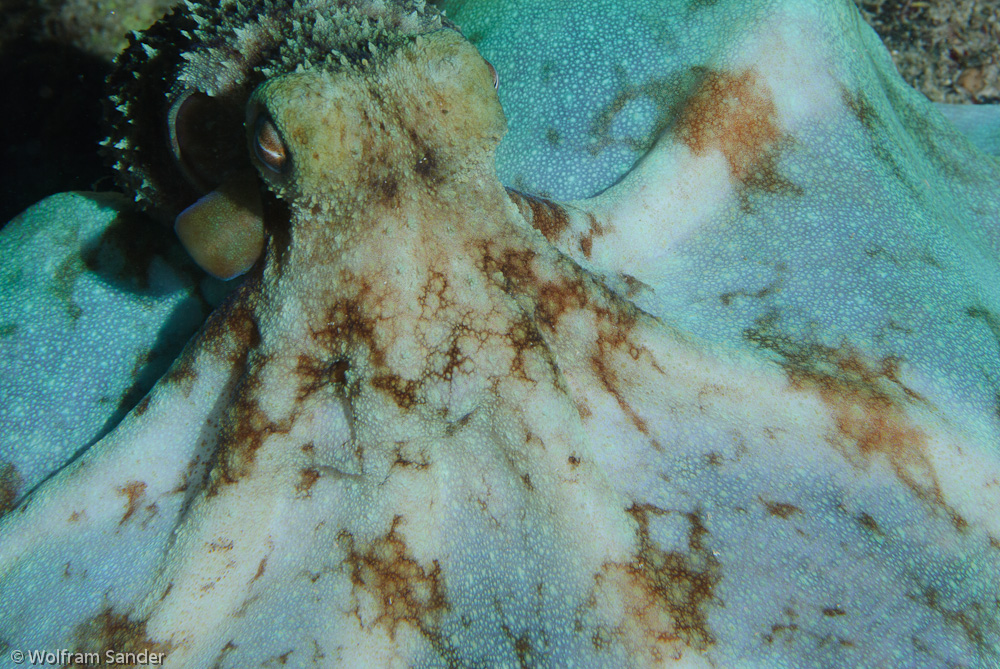 |
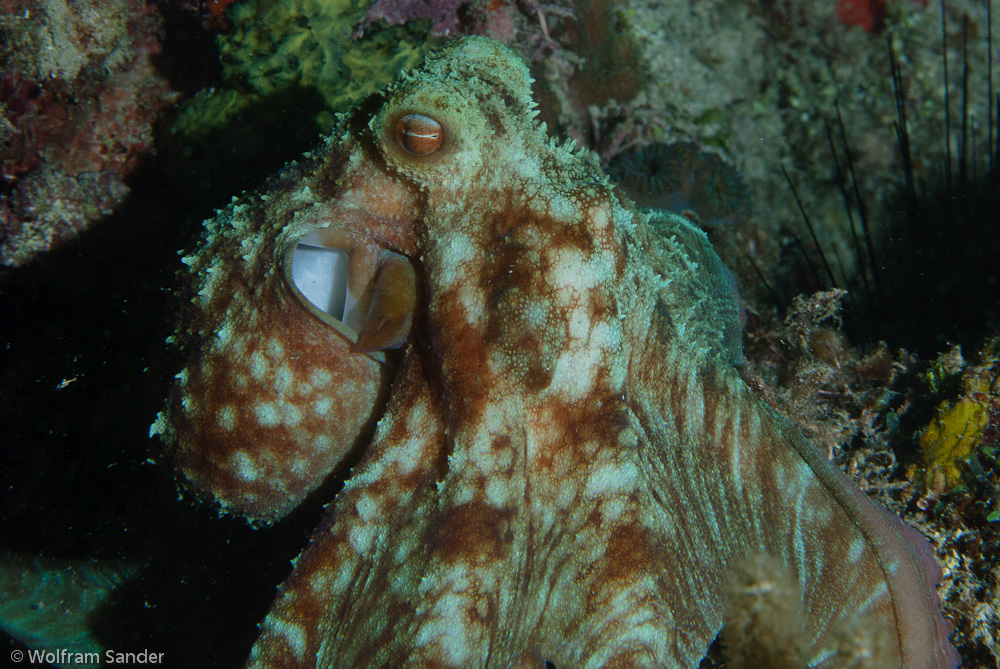 |
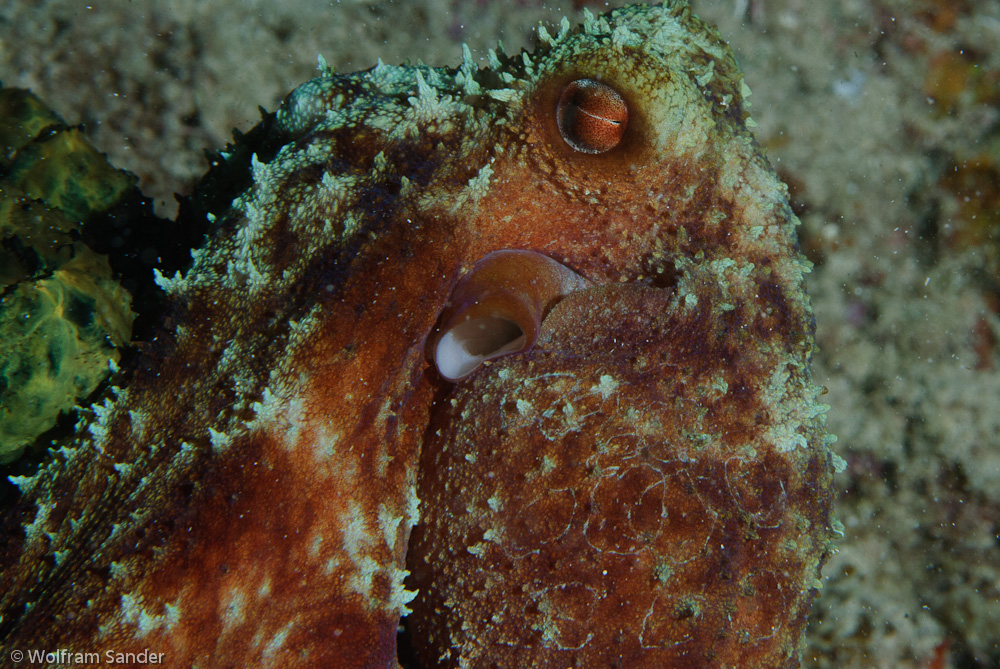 |
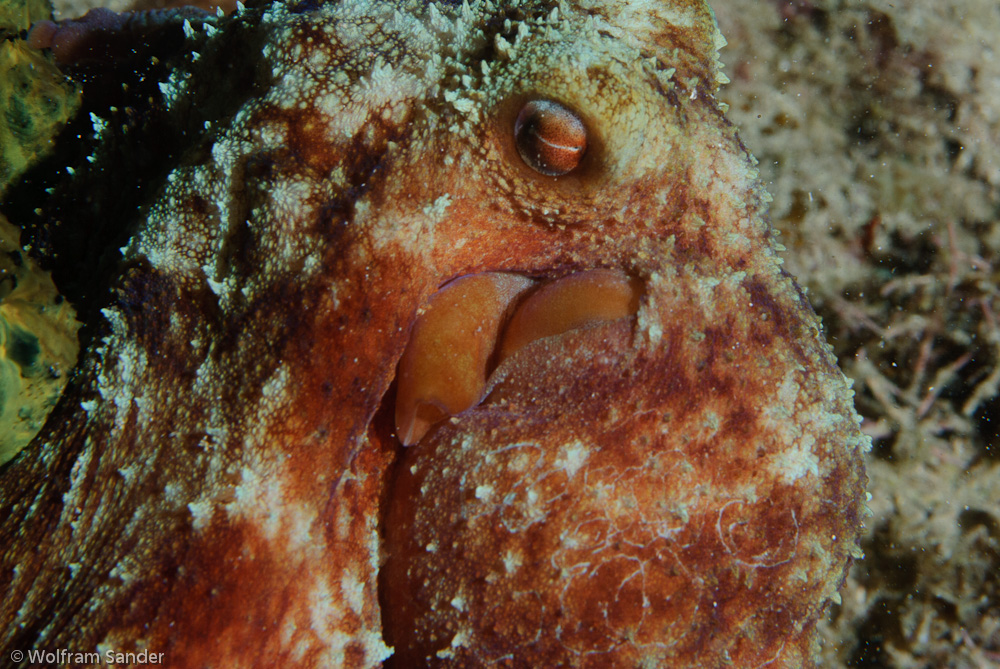 |
| 0 sec | 5 sec | 1 min 19 sec | 2 min 52 sec | 3 min 0 sec |

